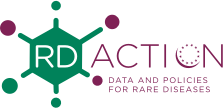Executive Summary Cont.
The workshop in April began with a broad discussion on ‘the status quo’ of data sharing in ERNs, exploring issues such as the likely uses of data collected for care; the feasibility -and actually, the desirability– of attempting to agree common data elements for case review; the differences between the data contained in these case review ‘forms’ and a registry per se, etc. The group concluded that in fact, the data collected for care, if retainable and reusable (as the Tender specifications for the CPMS confirm) will serve a multitude of uses beyond the primary purpose, from supporting teaching and education to elucidating genotype/phenotype correlations and supporting future diagnosis of patients. However, the CPMS must be first and foremost about enabling virtual care and providing greater access to the best possible expertise and advice, regardless of where a patient lives.
Ultimately, it does not matter if the 24 ERNs do not all use the data contained in the CPMS in the same way, for the same purposes, or even that they collect the same information: what matters is that all ERNs collect/store their patient data in a certain way, using agreed standards and ontologies.
The second day of the workshop was structured into four sessions: coding nomenclature; phenotypic nomenclature; linking data; and additional standards for ERN-related data.
1.Coding and Phenotyping Ontologies
The day began with practical demonstrations of the Orphanet nomenclature and resources. The speakers demonstrated why Orphanet nomenclature is the most appropriate and granular classification for capturing rare disease clinically. There was broad enthusiasm amongst ERNs to explore –according to their own timelines- how to use and improve the classification for their particular disease areas, particularly through the new Orphanet Knowledge Management System. To support this process, Orphanet will send formal invitation letters to ERNs to participate and curate.
The second session of Day 2 focused on standardising phenotypic data, with an emphasis on how best to do this in a ‘patient care’ setting. The basic conclusions were to recommend use of HPO in the ERN framework, and provide details on the different ‘HPO-powered tools’ available.
2. Linking Data
This session began with a detailed discussion of FAIR data, which is the acronym for making data Findable – Accessible – Interoperable – Reusable. The group tried to explore more concretely what ‘FAIR-ifying; data actually means. The expert presentations from Marco Roos and Claudio Carta will form an important part of the ‘tool-kit’ for the time being, with the recommendation that further learning can be ensured through attendance at the Bring Your Own Data (BYOD) workshops and events like the ISS Summer School. The second part of the Linking Data Session focused on updating the ERN stakeholders regarding the ‘Global Identifier’ Concept: this is about generating global identifiers allowing the linking of patient data without violating ethical/legal/social principles. This concept has evolved under the Task-Force of the IRDiRC & Global Alliance for Genomics and Health (GA4GH). The new PPRL (Privacy-Preserving Record Linkage) concept, it was agreed, is actually very important to ERNs, as the workshop learned that all data collected for use in the CPMS will be pseudonymised from the beginning – therefore it will be important to perform this process of pseudonymisation in a manner which avoids the ERNs being ‘locked out’ from broader research activities in the rare disease field.
3. Additional Standards
The group began to identify additional standards and classifications of relevance to the specific work of different ERNs, which will need to be taken into consideration alongside the above tools and ontologies.
Conclusions and Next Steps
The workshop provided significant ‘hands-on’ practical advice on using tools. The PwPs are very valuable, and will form part of the ‘tool-kit’ of resources the organisers promised to create as an additional output to the workshop. The main output, however, will be a set of recommendations on standardising data in the ERN framework.
